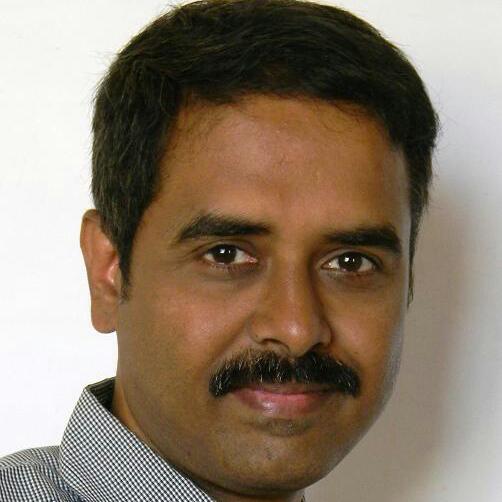With the Internet of Things (IoT) and smart technology nuances viz. Machine Learning (ML), Artificial Intelligence (AI), Deep Learning, and more making rapid headway in India, it only becomes natural for citizens to understand the societal benefits that the smart aspects bring to the table. At this instant, it is imperative to understand that IoT does offer solutions to issues that threaten to affect our economy.
Now, with India known for its offering of vast scope for technical research, there are entities who are actually involved in offering an initial level of smartness (to start off with) to aspects that are traditionally considered ‘cumbersome whilst being manual’. One issue which experts feel could become smart is agriculture – the driver of Indian economy.
So, is IoT in agriculture real-world or just in the textbooks?
At this instant, an interesting aspect is the fact that IoT in agriculture is more practical than theoretical according to experts. In fact, technologists even believe that IoT in tandem with internet-driven technology will even technically transform Indian farmers.
A simple illustration at this point in time is solutions that offer farmers insights via mobile apps and text messages, after analytics is run based on data collected by sensors. Now, data here could refer to aspects such as climatic conditions, land texture, track record of the farm land, and more. This would undoubtedly make lives of farmers easier and thereby inculcate confidence to sow crops along with preparedness.
In tandem with above, experts also offer valuable insights on more technically-driven aspects to help drive scientific farming. Click here to check out these technical insights.
There are entities that actually have IoT solutions deployed in real-world
In our quest to meet technologists having deployed IoT-driven solutions in the real-world, in a bid to solve plaguing issues, we came across Mysore-based METI M2M India which works in the Industrial IoT (IIoT) domain of the Internet of Things to provide solutions for manufacturing, solar, and for sectors that are interested in protecting their assets.
METI has developed competency and expertise in end-to-end development of IoT portfolio that covers IoT hardware, web-services, cloud server software, big data analytics and moblie apps.

METI M2M, incorporated in 2014, is headed by Narayana Swamy MK with over two decades of technology experience and also having served the Indian government in developing RDBMS and various embedded system projects.
“The rationale behind METI is to provide access to technologies used by international manufacturers to SMEs in India to improve their productivity and monitor their energy consumption. We are building technology that is easy to install and modular at the same time cost effective,” states Narayana Swamy.
“Our fundamental platform is called the METI IoT Gateway,” adds Narayana Swamy.
According to Narayana Swamy, another USP of METI is that the company’s technology offerings can also be used by small scale agro industries where generally the underlying operations are manual.
“The METI IoT Gateway collects data from multiple RF modules and sends data to our cloud. Our Secure Cloud and Analytics platform and SMS Gateway ensures that everything works seamlessly”, adds Anil Alur who is head of IoT Strategies at METI.
The IoT-driven technical offerings
One of the flagship embedded products of METI has been their IoT-driven water level monitoring solution that has seen deployment at agricultural fields in Karnataka. USP of this offering is its low power design. Basically, the sensor and communication module works with just a couple of AA batteries. These batteries generally have a lifetime of three months.
A graphical block diagram of the IoT-driven smart water monitoring system can be checked out below:

Now, three months is important considering the fact that this is the same amount of time required for harvesting of paddy in the fields. Also, it is worth noting that with the lifetime of the battery and the average time required for harvest are uniform, farmers are freed from the burden of having to supply power to the sensors of the water management system.
Since the power situation in Karnataka is bleak and referring to the fact power saved = power earned, conserving electricity becomes vital for farmers.

Driving factor behind the IoT-driven water management system for farmers
There was nothing fancy behind developing the smart water management system for agri-fields, states Anil.
Anil also emphasises that the motivation came via a non-governmental organisation (NGO) working closely with farmers in Karnataka and Tamil Nadu; both of which states have been hit by drought from the recent years.
“With the Cauvery issue reaching its peak, people were trying find alternate solutions for water shortage. Rice and sugarcane are prominent crops in this region that need water throughout. NGOs tried suggesting alternate crops to farmers, but since the demand for rice is always high, farmers did not want to switch crops.”
IoT to the rescue of precious water
With India always witnessing shortage of potable water and water for crops, despite being a resource-rich country, conserving precious resources is surely the need of the hour. Innovative water conservation mechanisms with IoT deserve a look-through.
Keeping farmers’ water consumption levels for paddy crop as the focal point, the key issue to be solved is the exact water requirement for corps.
“The water that was being let out into the Paddy fields was way higher than the actual requirement. Therefore, we were asked to design a product for monitoring the water level in each paddy field,” states Anil.
Now, with smart technology being the latest buzzword, METI did not have to look past the Internet of Things. Since the company possessed (by designing and development) a generic IoT platform, designing of products from IoT applications from the scratch could be eliminated. This directly translates into more time for engineers whilst off-loading burden.
Only the hardware with application-specific sensors required to be designed.
“Since it was a direct requirement from our client for a specific purpose, we already possessed the fundamental structure to build the entire product. It was a very requirement driven product and we have built features for the same,” reasons Anil.
Sensors thoroughly track water levels from every corner of the farm – Solving the major issue
Keeping water requirement for paddy as the focal area sensors placed in different locations, connected by the METI gateway, spanning the field, sense ‘water data’ and transfers this to the custom METI cloud. The custom METI gateway derives power from the sun via solar panels.
Deviation in water levels, from the standard levels, is tracked by the sensors and sent to the cloud for analytics.
“Any water level deviation will trigger SMS alerts and share these with the concerned party, which in our case is the NGO responsible for sharing limited water resources among multiple small farmers,” explains Narayan Swamy.
Developing low-cost and low-power solutions – Keeping it simple!
With the issue of water monitoring taken care of, there were other challenges viz developing the exact low-cost and low-power offering.
“Unlike Manufacturing, where we need to capture data in real time, here we can afford to read the water level once in 30 minutes. This proved to be a blessing for us,” states Anil.
Also, deployment of hardware over agricultural fields invites risk factors such as rodents; therefore, wired monitoring solutions are ruled-out in such use-cases. Therefore, METI used a simple wireless mesh to interlink sensors.
“We had to do a simple trade off. This meant thinking of a low-cost and low-power solution as power availability is scarce in rural areas. So, wireless mesh was the obvious choice,” explains Anil.
As far as underlying hardware (and applications) with respect to the METI smart water monitoring system is concerned, there are four essential components that can easily be deployed:
- A simple ultrasonic sensor that can be purchased off the shelf in any market across India.
- The innovation lies within powering up the sensor using 3V AA battery pack and make them last for at least 3 months. The controller board pretty much handles the detection of water level and communicating with RF module.
- The next part is the custom IoT Gateway, which collects data from multiple RF modules and sends data to the METI cloud.
- METI’s Secure Cloud and Analytics platform and the SMS Gateway that synchronise effectively.
Simple solutions = Simple cost
As per Narayana Swamy, low cost is the generic focal area of the smart water monitoring system. “Though farmers are not our direct customers, we have made it affordable for NGOs and agencies in rural areas to install it.”
The key takeaway from the above solution is the fact that a no-frills IoT-driven system can be built and deployed to solve real-world issues technically. Though not completely eliminating the issue, mitigation can be achieved via elimination of age-old unscientific engineering schemas.
METI’s smart water monitoring system for paddy fields driven by IoT is also an illustration of the fact that there is a definite need for deployment of smart solutions for society, and about the time now being ripe for deploying such solutions.
Composed by Rahul R, Senior Technical Journalist at EFY










